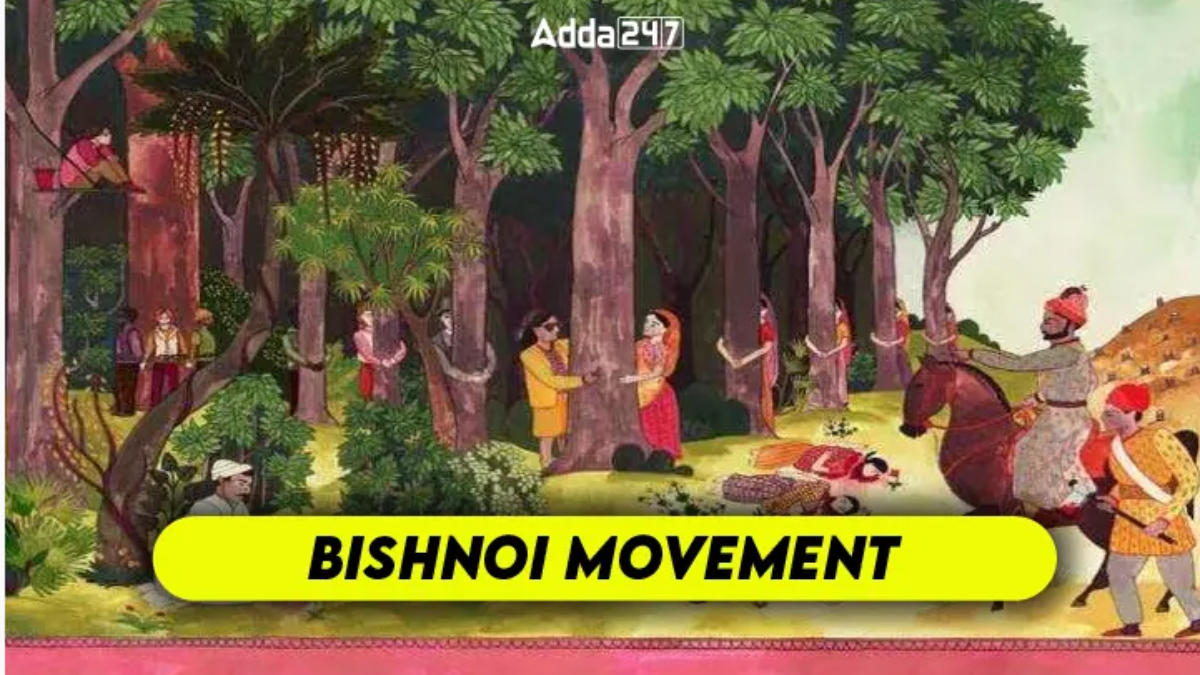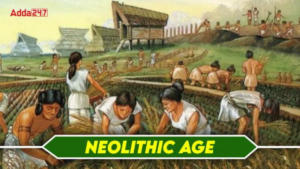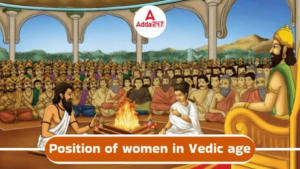Table of Contents
The Bishnoi Movement, originating around 290 years ago in the early 18th century in Rajasthan, was initiated by the Bishnoi community. Led by Amrita Devi, a significant number of Bishnois from 84 villages sacrificed their lives to safeguard trees from being cut down under the decree of the Maharaja of Jodhpur. This article delves into the Bishnoi Movement.
This movement is highly relevant to the Environment section of the UPSC GS 3 syllabus, highlighting community-led conservation efforts and the deep-rooted Indian tradition of environmental preservation. It emphasizes the historical commitment to protecting nature, which resonates with contemporary environmental ethics.
Bishnoi Movement
Understand the Bishnoi Movement through the below point which will very help in UPSC Exam Preparation, These points also increase your general knowledge about this movement.
- The Bishnoi Movement stands as one of the earliest endeavours in nature conservation, symbolizing a profound commitment to wildlife protection, sustainable living, and the preservation of natural resources. It marks a pivotal moment in the history of environmental activism.
- The Bishnois are revered as India’s original environmentalists, deeply rooted in nature-friendly practices. The genesis of the Bishnoi Movement can be traced back to a royal decree ordering the felling of trees considered sacred by the community. In a courageous display of defiance, individuals embraced these trees, risking their lives to prevent their destruction.
- Tragically, approximately 363 individuals perished in clashes with soldiers tasked with enforcing the decree. These martyrs, known as the Bishnoi tree martyrs, drew inspiration from the teachings of Guru Maharaj Jambaji, who established the Bishnoi faith circa 1485. Guru Jambaji’s teachings underscored the importance of non-violence towards trees and animals, laying the groundwork for the Bishnoi ethos of veneration for nature.
Background of Bishnoi Movement
- Originating in the 15th century within the Marwar region of Rajasthan, India, the Bishnoi Movement was initiated by Guru Jambheshwar, also known as Jambhoji, who advocated environmental conservation principles and sustainable living. The movement derives its name from the term “Bishnoi,” meaning “twenty-nine” in the Marwari language, signifying the twenty-nine principles prescribed by Guru Jambheshwar. These principles emphasize the protection of nature, wildlife, and the practice of non-violence.
- The Bishnoi community also referred to as the Vishnois, is renowned for their profound reverence for all life forms and unwavering commitment to environmental preservation. They have developed customs and practices aligned with their principles, including the prohibition of cutting green trees, killing animals, and polluting water sources. Today, the Bishnoi Movement continues to thrive, with the community actively engaged in environmental activism and conservation efforts, significantly contributing to the protection of wildlife and natural resources in Rajasthan and beyond.
Amrita Devi Bishnoi Wildlife Protection Award:
- The government of India established the Amrita Devi Bishnoi Wildlife Protection Award as a prominent national honor to honor her contributions to wildlife protection.
- The first Amrita Devi Bishnoi National Award for Wildlife Conservation was conferred in 2001.
- It was posthumously awarded to Ganga Ram Bishnoi of Chirai village in Jodhpur by the Union Minister of Environment and Forests.
Bishnoi Movement Objective
The Bishnoi movement had four main goals that make it easy for candidates to understand:
- Protecting Biodiversity: The movement aims to preserve the region’s plants and animals by encouraging a community that cares about the environment.
- Improving Health and Hygiene: It promotes personal cleanliness, basic healthcare, and active participation in social issues to ensure a healthier community.
- Stopping Deforestation: The movement stands against cutting down trees and supports efforts to prevent deforestation.
- Responsible Animal Care: It focuses on protecting biodiversity and encouraging responsible practices in caring for animals.
Bishnoi in Rajasthan
The Bishnoi community is primarily located in the western Thar desert region and other northern areas of India, with an estimated 600,000 followers across the country.
- In the 15th century, a villager named Jambhoji, living near Jodhpur, had a revelation attributing the drought and subsequent hardships to human interference with nature’s balance. He then adopted a monastic life, becoming Swami Jambeshwar Maharaj, which marked the genesis of the Bishnoi sect.
- Established in 1485 AD, the Bishnoi community follows 29 principles, also known as holy commandments, taught by Guru Jambeshwar. These principles include “Jeev Daya Palani,” advocating compassion towards all living beings, and “Runkh Lila Nahi Ghave,” discouraging the cutting of green trees.
- Jambaji observed the widespread felling of trees during droughts to feed animals, resulting in their eventual demise due to prolonged drought. Recognizing the crucial role of trees in the local ecosystem, he prohibited the cutting of green trees and the killing of birds or animals to preserve the ecology.
Bishnoi Community
- The Bishnoi community, entrenched in western Rajasthan neighbouring the Thar Desert for generations, stands out for its steadfast commitment to preserving the local environment.
- Their cultural ethos emphasizes the sanctity of all life forms, advocating against any harm to animals or plants.
- Recognized as pioneers in ecological stewardship, they adopt sustainable practices and prioritize environmental safeguarding.
- With a specialization in dairy farming, the Bishnoi Community of Rajasthan enjoys renown for its production of top-notch dairy items and soap.
- The Bishnoi community’s homeland near Jodhpur is rich in trees and wildlife.
- Despite adhering to Hinduism, they opt for burial over cremation for their deceased, respecting ecological constraints on wood consumption in their regions.
Read More about Indian History
Success of Bishnoi Movement
Following the pivotal event in the Bishnoi movement, the Maharaja responded by issuing a firm royal decree prohibiting tree felling in all Bishnoi villages. Originating around 1730 AD, the history of Bishnoism marks the genesis of the practice of tree-embracing and tree-hugging.
- Bishnoi movement deeply influenced the Chipko Movementwhich was led by Sunder Lal Bahuguna in the 20th century.
- Furthermore, as a tribute to their dedication to nature conservation and wildlife preservation, the governments of Rajasthan and India instituted the Amrita Devi Bishnoi Smrithi Paryavaran Award and the Amrita Devi Bishnoi Wildlife Protection Award respectively.
Bishnoi Movement Notes for UPSC Exam
The Bishnoi Movement stands as one of the earliest modern environmental conservation movements, influencing the Chipko movement in 1970. This article delves into the objectives and successes of the Movement of Bishnoi, crucial for UPSC exam preparation in the Environment section.
Key points regarding the Bishnoi Movement are provided below:
- The Bishnois of Rajasthan strictly prohibits the destruction of plants and animals.
- Guru Maharaj Jambaji founded the denomination in Marwar, western Rajasthan, in 1485 AD.
- King Abhay Singh of Jodhpur, in the 1730s, ordered his soldiers to cut down the trees for wood in Khejarli village for building his palace.
- Amrita Devi Bishnoi valiantly resisted the king’s troops’ tree-felling orders, ultimately losing her life when her head was severed.
- Asu, Ratni, and Bhagu, three daughters of Amrita Devi also stood by their mother.
- 363 individual Bishnois sacrificed their lives in defiance, striving to protect the trees.
- Understanding these facets provides a deeper insight into this significant topic, pivotal for the UPSC examination.



 Neolithic Age- Agriculture, Tools, Potte...
Neolithic Age- Agriculture, Tools, Potte...
 Position of Women in Vedic Age: Societie...
Position of Women in Vedic Age: Societie...
 Bodhisattvas: History, List of Bodhisatt...
Bodhisattvas: History, List of Bodhisatt...
